First impressions matter. Especially when people are glancing at your blog and deciding in two seconds whether they’re interested or not.
After setting up my blog, the first thing I did was test the design themes. Because I’m using wordpress.com and not wordpress.org. Because I know nothing about html, I knew creating my own blog from scratch would mean spending hours (days? weeks?) trying to tweak the tiniest things. No thank you!
Browsing WordPress’ ready-made themes, I realised I had a pretty clear idea of what I wanted: something clean, simple, and elegant. I was hoping to appeal to food blog fans interested in something a little bit different. But because I was aiming more for food blog than gross-out blog (which many weird food blogs are), my target visitor was sort of different to that of most other weird food blogs. Looking at blogs like Weird Meat and Deep End Dining, I like that they have simple, clear designs, but they’re not really the look I have in mind.
 I know that “clean” and “simple” are ridiculously vague descriptions of the aesthetic I like. I mean, Weird Eats has a relatively “simple” design but it’s so not what I aiming for. This blog’s subject matter is actually really similar to mine, but the site is just instantly unappealing. The red wave design of the header feels unsuited to a food blog. All the text is way too tiny. And the page is completely dominated by the white background.
I know that “clean” and “simple” are ridiculously vague descriptions of the aesthetic I like. I mean, Weird Eats has a relatively “simple” design but it’s so not what I aiming for. This blog’s subject matter is actually really similar to mine, but the site is just instantly unappealing. The red wave design of the header feels unsuited to a food blog. All the text is way too tiny. And the page is completely dominated by the white background.
The clean sort of design I had in mind was based on some of my favourite food blogs, like Smitten Kitchen. These blogs generally have plain white backgrounds, clear black font, a main column for posts, and a smaller sidebar. I admit, part of the reason I wanted “clean” was to appeal to my OCD tendencies, but also because it helps new visitors to easily navigate the site. And it makes it easier for them to focus on and read the actual content of the blog posts. Also, I think the neutral background and uncluttered design typical of good food blogs really suits the subject matter. Like a simple dining table, it falls back and allows focus to be on the food (photos in this case).
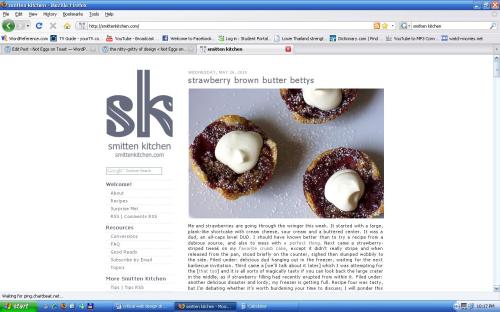
Most well-designed blogs also have clearly divided sections, usually columns. You can see it’s the design of magazines translated onto the web, especially the bare simplicity of gourmet food magazines and photography.  In his book The Laws of Cool, Professor Alan Liu describes the influence of modernist graphic design on the aesthetic of Web (Liu, p. 207). By trying to bring the familiar formats of pre-existing media to the Web, the Web’s creators were also transferred the characteristics of modernist design conventional to print media (Liu, p. 211).
In his book The Laws of Cool, Professor Alan Liu describes the influence of modernist graphic design on the aesthetic of Web (Liu, p. 207). By trying to bring the familiar formats of pre-existing media to the Web, the Web’s creators were also transferred the characteristics of modernist design conventional to print media (Liu, p. 211).
However, Liu states that modernist design and the Web are fundamentally incompatible because modernist design is based on a grid structure. And the Web’s “lack of fixed spatial dimensions defaces the concept of design” (Liu, p. 225). Apparently, the concept of “antidesign” is more true to the medium (Liu, p. 222). Antidesign is against the “asymmetry, unity, and clarity” of modernism (Liu, p. 219). See, Liu discusses these difference approaches in his quest to understand what makes “cool” design. The overall message seems to be that “cool” is modernist design but also “fundamentally antidesign” (Liu, p. 216). Very helpful.
When I think of antidesign, I think of the wacky amateur aesthetics of the 90’s described by Olia Lialina. The amateur design of that period is now considered the pinnacle of bad taste. But MySpace is still filled with examples of garish amateur design, like this MySpace page. This isn’t an extreme example, but the busy background, glitter graphics and glitter butterflies mean it definitely qualifies. According to Danah Boyd, MySpace and Facebook represent a class division- a fascinating observation that seems to be pretty true (in Lialina). Boyd highlights that aesthetics are more than visual appeal, they’re “culturally narrated and replicated” (in Lialina).
The social significance of design aside, I feel like amateur design is fine is what you want is a crazy visual buffet, but it just wouldn’t serve my purpose. Like the modernists, I want “clean, efficient visual communication for an age drowning in media” (Liu, p. 199). I want visitor’s focusing on my written content and photos. The last thing I want is decorative clutter, especially when the Web is so cluttered with information. I want my blog to be easy to read and scan, unlike the crazy site for Ling’s Cars.
So, the WordPress themes I considered for my blog had white backgrounds, nice black font, and customisable headers. I wanted to customise the photo in the header so it would immediately point to my blog’s subject and style. The first couple themes I tried had headers and subheadings that were too small and not bold enough. The theme I finally chose was PressRow. The header is large and bold, and the font is reminiscent of print media but not too formal. I also like that the post headers are quite large, and clearly demarcate different sections of the blog.
I might not have the perfect theme for my blog niche, but it works pretty well. Except I only realised recently that the text of my posts are in a (mild?) serif font, which some view as unsuitable for reading on screens. But I did a bit of research and found out that san-serif fonts aren’t necessarily more readable (Poole). Even better, I noticed that one of the top food blogs, La Tartine Gourmande, uses the same font as me. So it can’t be that bad!
P.S. Check out this little cartoon about the stereotypical professional/amateur divide: ‘How a Web Design Goes Straight to Hell’
Sources:
Lialina, Olia (2007) ‘Vernacular Web 2’, http://www.contemporary-home-computing.org/vernacular-web-2/.
Liu, Alan. (2004) ‘Information is Style’ in Laws of Cool: Knowledge Work and the Culture of Information. Chicago: University of Chicago Press.
Poole, Alex (2005) ‘Literature Review- Which Are More Legible: Serif or San Serif Typefaces?’, Alex Pool- Interaction design and research, http://www.alexpoole.info/academic/literaturereview.html.







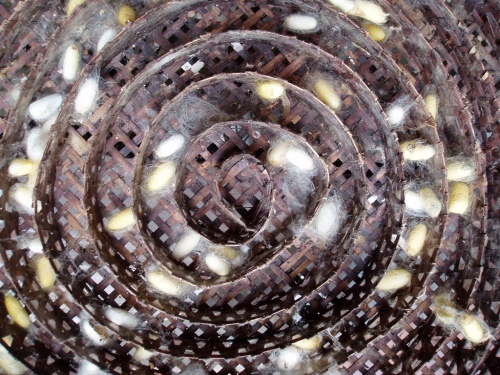


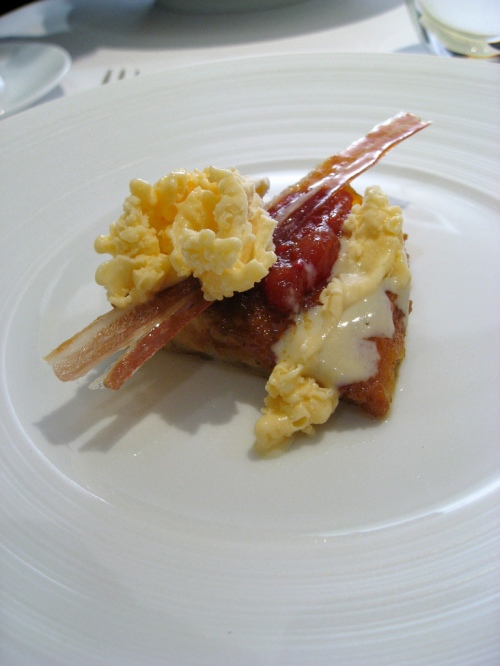
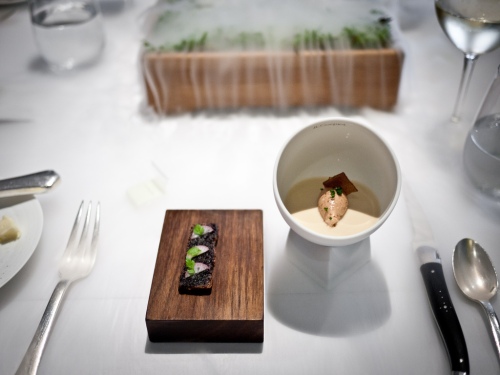
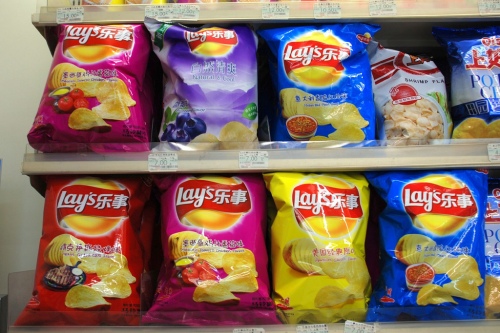


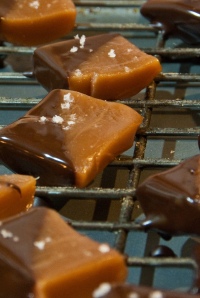

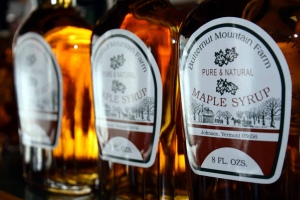

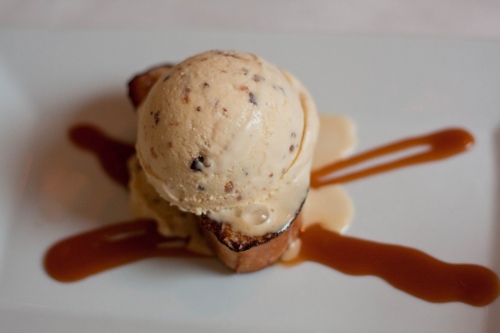




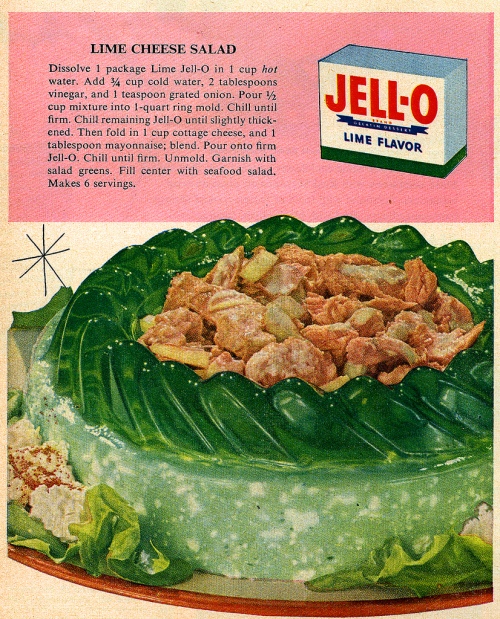
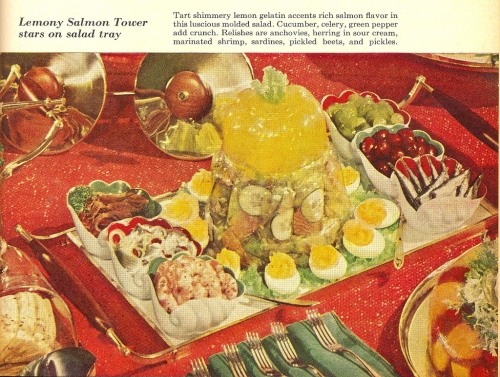
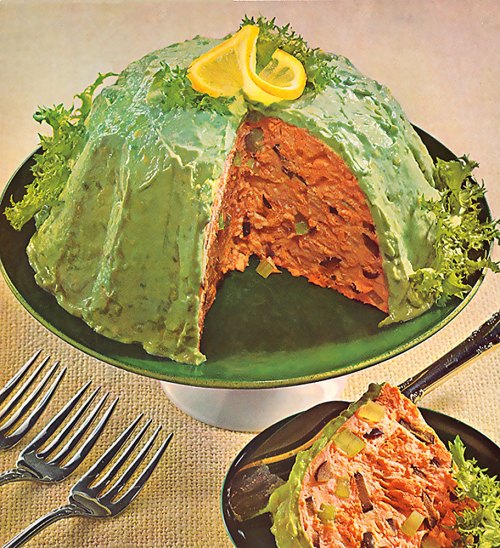

play nice or shut up, please.
I struggle to remember, but I don’t think I’d ever written a comment before this blog. It’s kind of shocking, considering how much content I read online. I guess I’m more of a comment reader than a comment writer. But since my blog got its very first comment I feel like I’m finally in the game! Like customers in a restaurant, I think comments attract more comments. And my mother would never sit in a restaurant with no customers… Is this analogy working?
Web guru Tim O’Reilly describes the blogosphere as an online “conversational watering hole”. Robert Scoble, who used to blog for Microsoft, says “cross-site conversations” are a key element to popular blogs (Lovink, p. 4). Two-way communication is clearly an important aspect, whether or not it’s in the form of comments.
Geert Lovink says that blogs “are characterized by a culture of desired affiliation” (p. 2). You can definitely see that in the realm of food blogging. The comments on one my favourite cooking sites, Smitten Kitchen, are relentlessly positive. There’s an atmosphere of sharing and general pleasantness. Maybe it’s the subject of delicious food that quells nastiness. Whatever it is, I’ve never seen a negative comment on the site. Of course, rude or inappropriate comments might just be deleted by the blogger. As Lovink points out, freedom of discussion on blogs is limited (p. 21). There’s always someone in control, who can allow or disallow comments. That’s one reason people often post responses on their own blogs instead of commenting (Lovink, p. 21). Referencing the work of Florian Cramer, Lovink says:
“The original posting of the blog owner is not equal to the answer of the respondents… Users are guests” (p. 20).
And being a good guest means remembering your “netiquette”. According to Wikipedia- I wasn’t just being lazy, I thought Wiki’s description would reveal the general consensus- basic netiquette means avoiding flamewars and spam (Wikipedia). All too often basic etiquette seems to go right out the window when people start commenting, whether it’s on YouTube or on news sites. During the recent violence in Thailand I was reading news about it on CNN.com. I found the comments as upsetting as the article I read. They were rife with hostility, insults, and extreme assertions. A painful few displayed open-mindedness and attempts at understanding both sides.
Unlike articles about politics and religion, food blogs are far less likely to create controversy. ‘Weird food’ blogs can be slightly more prone to flamewars, since there are huge cultural differences about what’s acceptable as food. Posts or comments can be culturally insensitive. Heated arguments can break out about the ethics of eating meat, which is what happened on the blog Weird Meat. It usually gets about 10 comments per post, but the post ‘Dog Meat’ got an astounding 220 comments. Debate and sharing perspectives seems like a good thing, but there were clear examples of bad netiquette, like suggestions that dog-eaters should “burn in hell”. Lovink says that blogs “create communities of like-minded people” (p. 21). In this case, not so much. Here’s a sample of the flamewar (these comments were both written anonymously):
There are some, like Claire E. Write, who believe “the essence of a blog is not the interactivity of the medium” (Lovink, p. 28). Flamewars aside, I disagree. A blog may not be defined by interactivity, but I think it’s what’s created the massive blogosphere. Without the communicative aspect, blogs would be stuck at the personal homepage stage. I also think that being able to instantly respond to or communicate with the writer is what often makes blogs more appealing than print media. Not only are you imparted the writer’s views and experiences, but you can join in on that conversation, potentially (emphasis on potentially) enriching the public sphere. Which is why I allow comments on my blog. I’m not the authority on weird food. I’m only sharing what I discover, and I’m happy to learn from visitors as well. Plus, it’s nice to know that my blog gets more than split-second and accidental views.
And as long as my blog is newborn and lost somewhere in the long tail, I think I’ll handle the comments as they come.
Sources:
Geert Lovink (2007) ‘Blogging, the Nihilist Impluse’, pp. 1-38 in Zero Comments: Blogging and Critical Internet Culture, London: Routledge.
Tim O’Reilly (2005) ‘What Is Web 2.0’
Leave a comment
Filed under creating the blog
Tagged as blogging, blogosphere, comments, flamewars, food blogs, Geert Lovink, netiquette, Tim O'Reilly, weird meat